hankyoreh
Links to other country sites 다른 나라 사이트 링크
[Korea travels] Jeju’s charming old city center draws hip new crowd

There are two famous walls in Jeju right now. The first is the “southern wall,” or rock face, of Mount Halla, which is especially beautiful after a snowfall. The second is “d wall” — covered in plain gray paint aside from the lowercase letter “d” — in the Tap neighborhood of Jeju City, on Jeju Island. The hottest new trend on Instagram right now is for people in their 20s and 30s to post solo shots of themselves in no-make-up make-up, chic but casual ‘fits in front of this wall.
The Tap neighborhood has now become a trendy neighborhood where up-and-coming local brands on the island can rub shoulders with Korean conglomerates and global brands with an interest in being extra local and eco-friendly.
It has D&Department, a brand that blends good design with recycling; the upcycled handbag brand Freitag; Kolon Sport’s eco-friendly branch Sotsot Rebirth; Magpie, a pub that makes 100% of its beer at its brewery on Jeju; and Ggti Tapdong, a multipurpose culture space at the end of the Tapdong beach.
The old Jeju City center — including the neighborhoods of Ildo No. 1, Samdo No. 2, and Geonip — has also been the focus of a recent rediscovery. This piece introduces some of the hot locales in old Jeju City that have been drawing foot traffic from young millennials and zoomers.
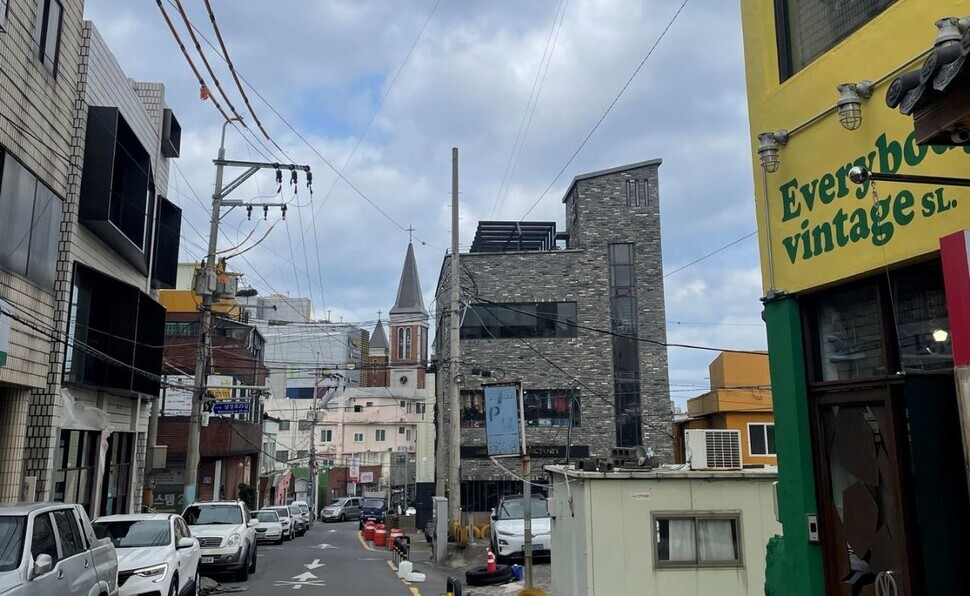
The Tap neighborhood in Jeju City is one big reclamation site. The name “Tap” comes from the word for “tower”; the story goes that it comes from the towers that the island’s many young widows would build to hold rituals to calm their thirst for blood after losing their husbands.
In the past, the beach here is said to have been covered in sleek black “ink stones,” which made for an awesome landscape. It was also famous as a site for barehanded fishing, which residents would visit during low tide to gather seafood.
The area’s development went ahead despite fierce opposition. Reclamation of the public waters began in 1985 and finished in 1991, after which hotels and grocery stores went in.
As recently as the 1990s, Tap neighborhood was a thriving commercial street. But as the old city’s commercial areas began to decline in the early 2000s, the foot traffic dwindled.
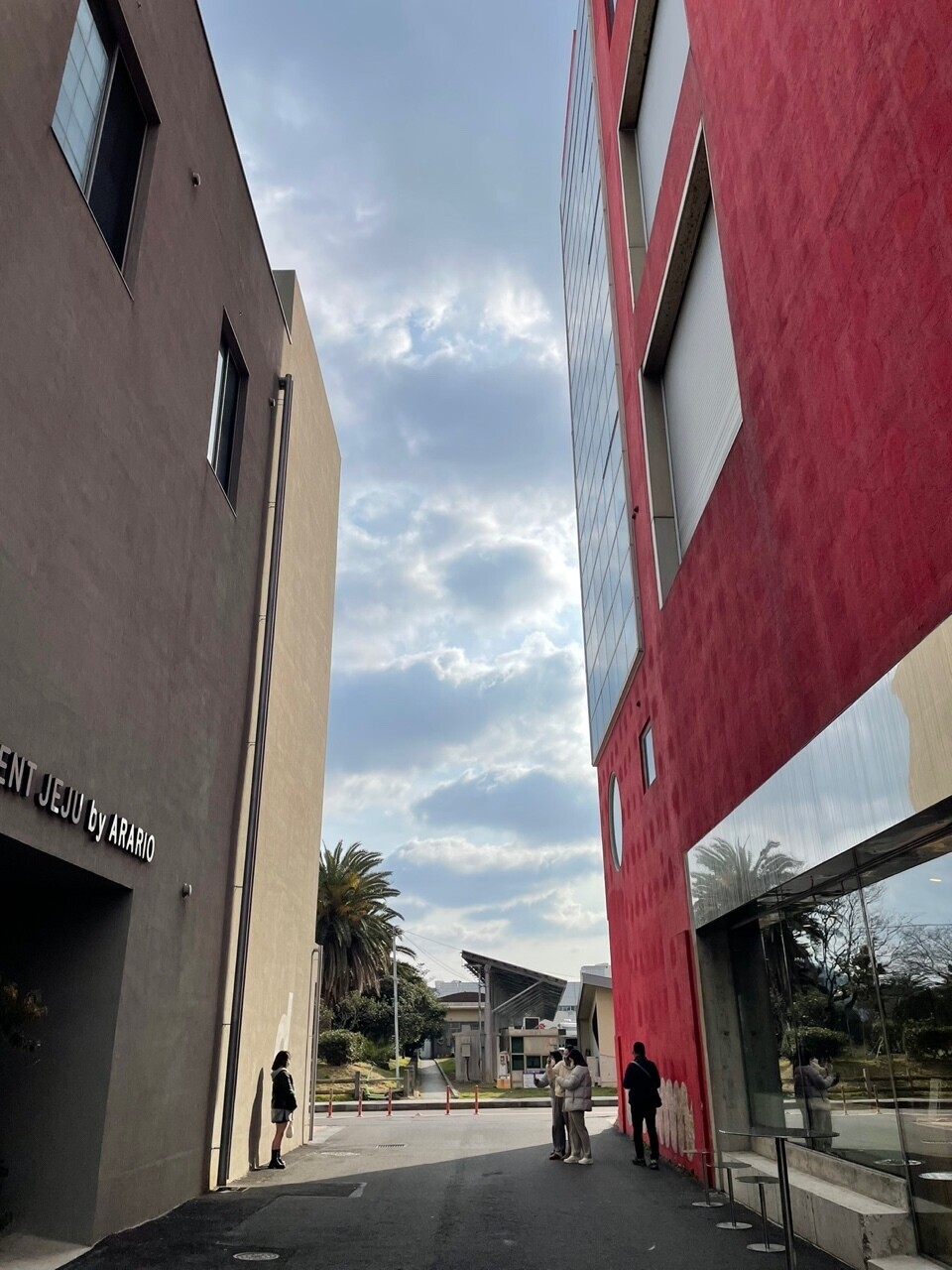
The signs of change were first seen in 2014, when the Tapdong Cinema — which had shut down in 2005 — was renovated and reopened as the Arario Museum. Since 2020, stores with eco-friendly values and vibrant images have been springing up in the neighborhood, attracting younger crowds who have turned Tap neighborhood into a new “it” neighborhood.
The opening of Kolon Sport’s Sotsot Rebirth on Feb. 10 was like an interim report on the old city center’s revival.
Designed by Jo Nagasaka of Schemata Architects — an architect renowned for his aesthetic of subtraction — the building features Kolon Sport’s traditional evergreen logo on the old structure’s wall. The concrete is left exposed, with minimal finishing to ensure less waste. The tables, shelves and chairs in the store are all recovered waste from the sea around Jeju.
The items on display in the store boast refreshing designs that are 100% upcycled by Kolon Sport. It sells handbags stitched together from old clothing, thermos covers made from recycled socks, and various items of clothing. It also offers affordable rentals (around 5,000 won) of items for outdoor activities, including camping tables, chairs, raincoats, hiking poles, crampons and spats.
Since opening just over a month ago, the store has been drawing a steady stream of visits by Jeju influencers and younger customers.
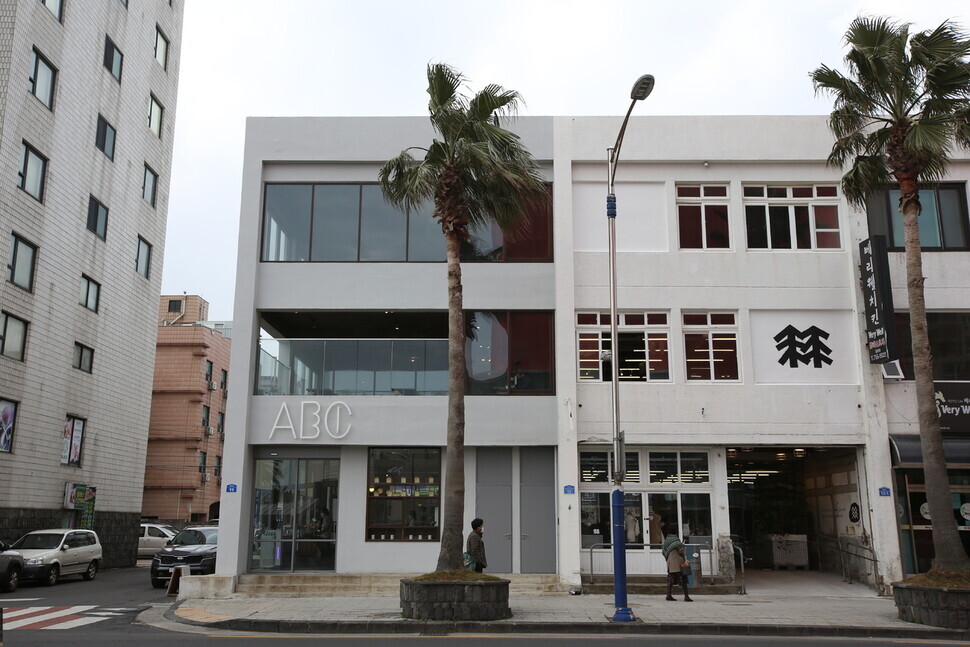
The building next to the Arario Museum in the center of the neighborhood is D&Department (d-jeju.arario.com), which includes the hotel D Room alongside restaurants and stores selling upcycled furniture and other items.
Built in 2000 by the famous Japanese designer and businessman Kenmei Nagaoka, D&Department is a prides itself on being a department store that sells well-designed items that you can use for a long time.
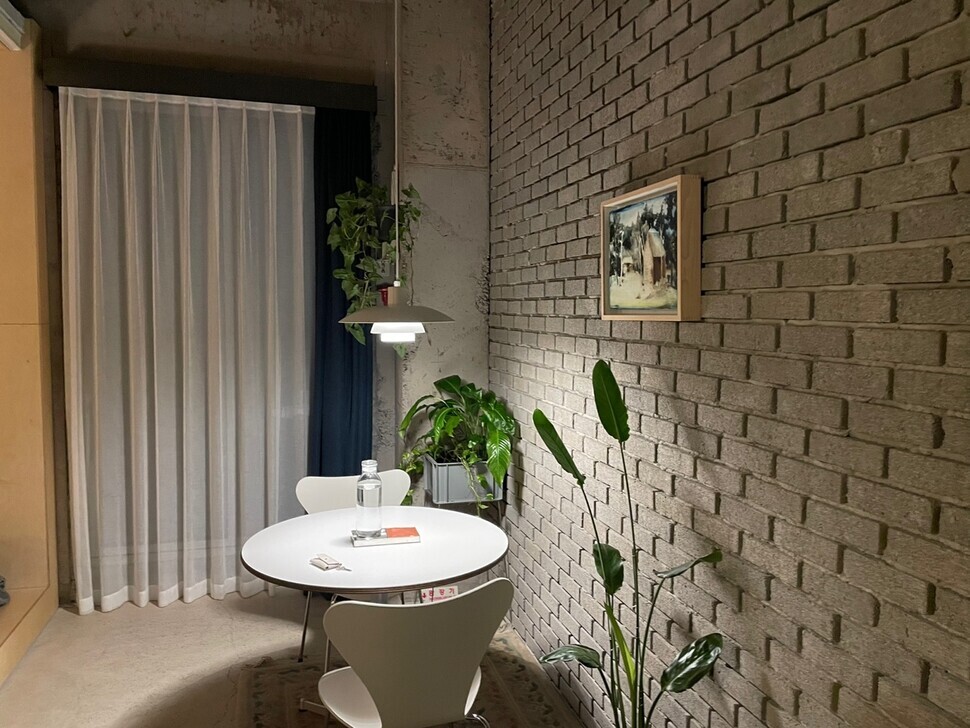
D Room’s concept is that of a hotel that doesn’t feel like a hotel. The feeling walking into its reception area was as comfortable as a visit to a friend’s or relative’s home.
My single guest room was a bit on the cramped side, but it boasted an immaculate mid-century modern style with its pendant light by designer Louis Poulsen and its vintage chair by Fritz Hansen. It was also like one big showroom: everything in the guest rooms, including the furniture, towels, and even the portable flashlights, can be purchased in the store.
All of the furniture pieces in the guest rooms and lounge area — like a combined hallway and living room — were vintage second-hand items. At 160,000 won for a single room and 300,000–370,000 won for a double (along with a 50,000-won membership), the rates were a bit steep, but the hotel has attracted younger people looking for a special experience.

On either side of the D&Department building are the Jeju branch of Freitag — which young people line up to visit early in the morning — and a bicycle shop, along with the famous craft brewery Magpie.
At the end of the neighborhood, in an old building on Geonip’s western wharf, is Ggti Tapdong, a multipurpose cultural space opened in January by the urban renewal startup RTBP Alliance.
The large graffiti design by artist Koo Hun-joo on the exterior of the old Jeju shipyard building just next door is the epitome of “vibes.” Visitors can look out at the wide-open sea as they sip beverages at the second-floor café.
Located near Sanji Stream, which runs through the old downtown area of Jeju City, is All That Jeju (Instagram: @all_that_jeju_rey), a bistro opened in 2014 by chef and Jeju native Kim Gyeong-geun.
This restaurant welcomes unaccompanied diners, serving up dishes made with locally sourced seasonal ingredients along with various types of sake, wine, beer and local alcoholic beverages. A particular highlight is the menchi cutlet croquet, which is made with Jeju pork and beef.
“We’ve taken a major hit with the COVID-19 restrictions on operating hours, but we’ve been able to keep going thanks to our regulars,” Kim said.
Another pick among younger people is Mechin Udon (@mechinudon), an udon and sake bar recently opened nearby by owner/chef Gong Geon-a of Mechin Kitchen, a renowned Japanese-style pub izakaya in the neighborhood.

There’s also a strikingly youthful sense around Gwandeok Road, part of the old city center where Jeju’s history and culture are preserved.
Tangerine Mansion (@tangerine_mansion) is located at the end of Gwandeok Road No. 6 Street in the neighborhood of Samdo No. 2, which connects with Nammun Road, the oldest thoroughfare in Jeju.
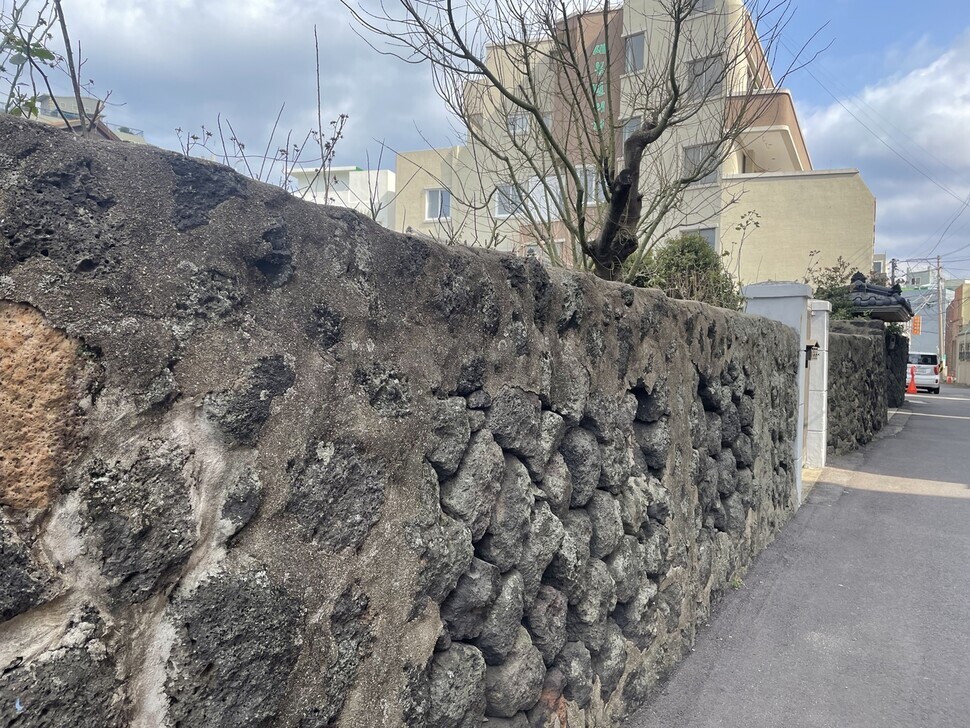
An old hotel that has been renovated into a cultural space, Tangerine Mansion was created as a melting pot of culture bringing together Jeju travelers and locals.
On display and sale on the first floor are items with a youthful design flavor, including clothing, bags, accessories, and scents. The café Lit Bread on the second floor features the scenery of old Jeju City sprawling outside the window — an opportunity to take the snapshot of a lifetime.
On the narrow street of Gwandeok Road No. 4 Street behind the building are a number of small stores with a retro feel that are frequented by younger customers, including the Jeju branch of the independent bookstore After Books (@jeju_afterbooks) and Classic Stationery (@classic_stationery).
On the nearby culture and arts street of Gwandeok Road No. 6 Street in the Samdo No. 2 neighborhood, visitors can window shop and purchase work by ceramic artists (Gama & Joy, 064-752-2750). After checking out the Immaculate Conception Cathedral (Gwandeok Road No. 8 Street), which is famous for its Gothic design and beautiful bell ringing, visitors can stop at the end of the street, where young people line up at the red algae pudding shop Umu (@jeju.umu) and entertainers frequent the vintage store Everybody Vintage (@everybody.vintage).
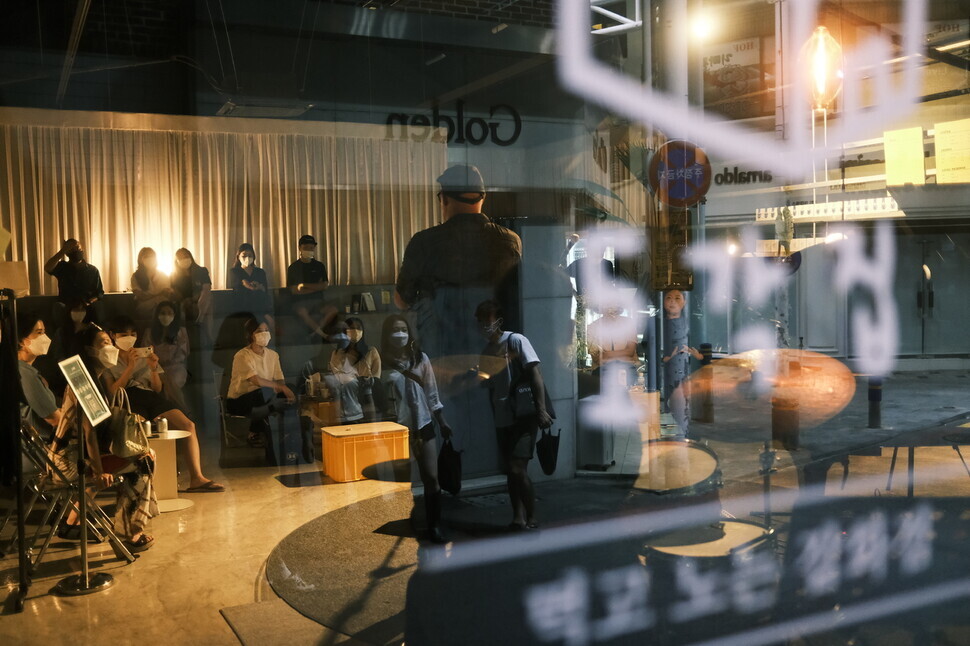
Ogakjib (Gwandeok Road No. 15 Street, @ogakjib), which is located inside the Chilseong Road shopping town, is a good base for a walking tour of the old city center. Visitors can purchase food at the nearby Dongmun Market to enjoy along with seasonal wine or beer. The venue also has a flea market, various activity-based events, and performances — including surprise shows as artists take the stage.
Because of the beautiful buildings and gardens, the former government offices of Jejumok Gwana and the old military training site of Gwandeok Hall (National Treasure No. 322) on Gwandeok Road have been the subject of ongoing calls to abolish the current entrance fees and open them up as public recreation and culture spaces.
“Gwandeok Hall was the site of the March 1st holiday commemorative event in 1947 that touched off the Jeju April 3rd Incident,” explained Go Je-ryang, co-representative of the Korea Ecotourism Society.
“I recommend that visitors enjoy a walking tour of the old city center, where they can encounter greenery like the beautiful camphor trees of the Jejumok Gwana, the round-leaf holly trees with their red fruit, and the Washington palms,” she added.
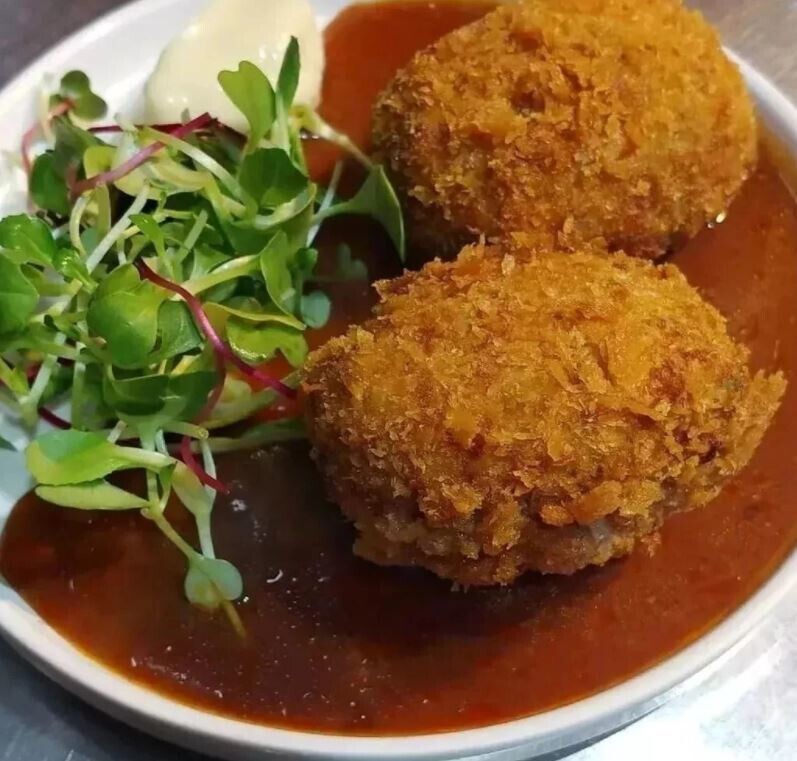
Café Sim Ji is located at the end of Chilseong Road, at the heart of the old city center. Among Jeju residents, the location is famous for the tearoom it used to house.
“Between 1976 and 1996, the Sim Ji tearoom was a cultural cradle in the Jeju city center,” explained Kim Gyeong-eun, who opened the café Sim Ji in 2019.
“As a tearoom with a DJ playing music, it was a hot spot among young people, an economic and cultural hub that was like ‘Jeju’s Myeongdong,’” she said.
The café’s freshly made tea and the warm hot dog in a soft steamed bun that the owner cooked up were like a balm to my weary heart.
Yang Min-gu, secretary-general of Jeju’s urban regeneration center — which has been helping with the old city’s renewal — explained that the inner city has been “gradually taking on new life thanks to the efforts of businesspeople, young brand planners, and building owners who lowered rents to help bring in cultural spaces.”
By Lee You-jin, staff reporter
Please direct questions or comments to [english@hani.co.kr]

Editorial・opinion
![[Editorial] Intensifying US-China rivalry means Seoul must address uncertainty with Beijing sooner than later [Editorial] Intensifying US-China rivalry means Seoul must address uncertainty with Beijing sooner than later](https://flexible.img.hani.co.kr/flexible/normal/500/300/imgdb/original/2024/0517/8117159322045222.jpg) [Editorial] Intensifying US-China rivalry means Seoul must address uncertainty with Beijing sooner than later
[Editorial] Intensifying US-China rivalry means Seoul must address uncertainty with Beijing sooner than later![[Column] When ‘fairness’ means hate and violence [Column] When ‘fairness’ means hate and violence](https://flexible.img.hani.co.kr/flexible/normal/500/300/imgdb/original/2024/0516/7417158465908824.jpg) [Column] When ‘fairness’ means hate and violence
[Column] When ‘fairness’ means hate and violence- [Editorial] Yoon must stop abusing authority to shield himself from investigation
- [Column] US troop withdrawal from Korea could be the Acheson Line all over
- [Column] How to win back readers who’ve turned to YouTube for news
- [Column] Welcome to the president’s pity party
- [Editorial] Korea must respond firmly to Japan’s attempt to usurp Line
- [Editorial] Transfers of prosecutors investigating Korea’s first lady send chilling message
- [Column] Will Seoul’s ties with Moscow really recover on their own?
- [Column] Samsung’s ‘lost decade’ and Lee Jae-yong’s mismatched chopsticks
Most viewed articles
- 1[Editorial] Transfers of prosecutors investigating Korea’s first lady send chilling message
- 2[Exclusive] Unearthed memo suggests Gwangju Uprising missing may have been cremated
- 3Xi, Putin ‘oppose acts of military intimidation’ against N. Korea by US in joint statement
- 4[Column] US troop withdrawal from Korea could be the Acheson Line all over
- 5[Column] When ‘fairness’ means hate and violence
- 6[Editorial] Intensifying US-China rivalry means Seoul must address uncertainty with Beijing sooner t
- 7China, Russia put foot down on US moves in Asia, ratchet up solidarity with N. Korea
- 8Spotlight turns to Hyundai Group Chairwoman’s visit to North Korea
- 9Records show how America stood back and watched as Gwangju was martyred for Korean democracy
- 10‘Shot, stabbed, piled on a truck’: Mystery of missing dead at Gwangju Prison